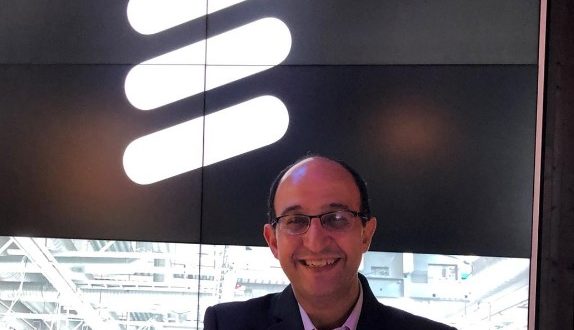Mohamed ElSokkary: Head of Managed Services for Ericsson Gulf Countries
The Critical Role of Managed Services in Driving Operators’ Digital Transformation
Digital business transformation is a critical factor in long-term success of a business, and
telecommunication service providers are no exception. Communications Service Providers
(CSPs) are taking concrete steps to increase their competitiveness and stay ahead of the
game. They now pursue first-mover advantage strategies, best exemplified with their end-
to-end corporate strategy approach.
A service provider’s digital transformation journey encompasses a holistic approach that
creates value and business differentiation – it is not limited to technology involving BSS,
OSS, network slicing, virtualization and containerization. It entails managing operations to
handle increase in network complexity homogenously and Managed Service Providers
(MSPs) must be ready to meet future demands to stay relevant, enhance customer
experience, drive efficiency and pave the way for innovation on next-generation networks.
MSPs, as trusted advisors and partners, must create new portfolios to help CSPs drive a
superior customer experience while delivering flexibility, cost and operational efficiencies.
Let us have a closer look at the top challenges faced by CSPs and how Ericsson has enabled
collaborative innovation and transformed the way networks and IT operations are handled to meet the challenges of tomorrow.
1. How can we transform the network to be more cognitive boosting customer experience?
5G CSPs need to evolve their network operations from being technology centric to service
and customer centric, by focusing on data driven automated operations driven by Artificial
Intelligence & Machine Learning (AI & ML) capabilities. This will improve service
performance and customer experience utilizing Service KPI measures and bridge the gap between Network/ IT KPIs and end user perception.
While transforming to a more cognitive network where we leverage on data and predictive
analytics to enhance planning and efficiency using AI and ML as enablers, specific
algorithms are designed and models trained to predict and meet the demand of a specific
network slice to ensure the strictest SLAs required for each slice are met. By observing data
patterns from all services slice components, Ericsson has developed its algorithms to
predict Service Slice degradation before it occurs and isolate specific contributing factors.
Learning from previous policy executions, it recommends actions that yield the most
positive results.
2. How can we increase the revenue growth by means of service differentiation and the
ability to leverage on partners’ ecosystems?
MSPs should help CSPs to unleash the full value of the investments in BSS and OSS
portfolio with fully automated DevOps and lifecycle management frameworks, improving
agility and speed of development and testing. This will result in faster time-to-market
(TTM) for new products and services, which will lead to increase CSPs market share and
grow the revenue.
The Ericsson Operations Engine combines AI, automation and deep industry expertise to
help provide efficiency that scales. Proactively managing networks to deliver secure, reliable performance and optimize costs across operations, it empowers operators with the
tools to ensure next-generation connectivity.
3. How can we reduce subscribers’ churn?
There is no silver bullet to address that challenge, but ICT market studies performed by
Ericsson Consumer Labs have revealed that network quality is one of the main differentiators which leads to higher end user customer perception and help to reduce the churn rate. Focusing on improving Net Promoter Score (NPS) is the key here to measure and act. At Ericsson, we have managed to develop an NPS correlator using our AI/ML methods to consolidate all the data from the network management, performance, CRM and field measures and paint the overall picture for the end-to-end customer experience and address each subscriber segment separately. This method contributes to increasing the NPS score by more than 25% in a few months, and consequently reduces the churn rate.
4. How best to address operational inefficiencies by leveraging automation and AI?
One of the main pain points for CSPs is related to how can we reduce the overall end-to-
end operating expenditure. For instance, site energy consumption constitutes between 20–
40% of total network OPEX. Reducing energy usage on passive equipment is as important
as the active equipment, as 50-70% of site visits and network trouble tickets are related to
passive equipment. Consequently, we developed our new portfolio to optimize energy
infrastructure operations by developing data driven solution with an innovative business
model, to deliver energy related OPEX & CAPEX savings as well as operational efficiencies
to ultimately enable substantial reduction of CO2 emissions.
5. How can we improve security to deliver trusted and secure business to customers?
As growing traffic and volume of connected devices raise the risk of security threats,
security breaches and infringement can cause costly downtime in the network, which mandates working immensely on improving security. In addition, several CSPs are moving into the financial services and payments verticals, where its security is more important, and
regulated, than anywhere else.
For service providers, concerns include the risks associated with decentralization,
virtualization and critical infrastructure, as well as increases in fraud.
To minimize the impact of these risks, organizations need to shift how they manage security. Moving from a manual, reactive approach to one that is automated, policy-based and intelligent. There is a need for a solution that constantly monitors security compliance, detects and responds to new threats, supporting cost-efficient security operations.
Our approach? Automated, security management that safeguards the products and services our customers need to be successful in the face of tomorrow’s security challenges.
Finally, when new technology is established in our society it also drives new behaviors among people and their role as consumers, and these new behaviors represent potential new markets. The same thing happens in industries: when a new technology becomes available organizations can possibly change areas within their business, such as value chains and operations, but also whole business models and the entire market itself.
Managed services providers should continue to relentlessly re-skill and upskill their capabilities as well as introduce new and agile ways of working to differentiate themselves in the market and to help customers through the digital transformation journey.
 التكنولوجيا وأخبارها بوابة مصر لأخبار تكنولوجيا المعلومات والإتصالات
التكنولوجيا وأخبارها بوابة مصر لأخبار تكنولوجيا المعلومات والإتصالات







